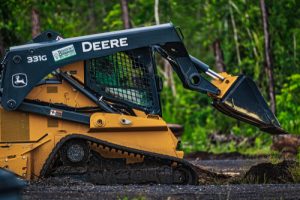 Site Clearing 101: Tips and Best Practices
Site Clearing 101: Tips and Best Practices
Site clearing is an essential step in any construction project, whether you’re building a new home, a commercial building, or a public space. It involves the removal of trees, brush, and other obstacles from the construction site to make way for new structures or landscaping. Site clearing can be a complex task, but following the right tips and best practices can help ensure a successful project. Here are some tips to consider:
1. Evaluate the site
Before starting any site clearing, it’s essential to evaluate the site carefully. Look for any natural features like rock formations, streams, or underground water sources that may impact the clearing process. You should also consider the soil conditions, terrain, and any possible obstacles that may require special equipment or techniques to remove. This evaluation can help you create a comprehensive plan for the site clearing process from start to finish.
2. Obtain necessary permits
Depending on your location, you may need to obtain permits from local authorities before starting any site clearing. These permits may include environmental permits, tree removal permits, and zoning permits. Be sure to consult with your local authorities to get all the necessary permits before starting the clearing process.
3. Hire professional site clearing contractors
Site clearing is a complex process that requires specific skills and specialized equipment. It’s essential to get in touch with professional site clearing contractors who have the expertise, experience, and equipment to get the job done safely and efficiently. Expert site clearing contractors can help you evaluate the site, obtain necessary permits, and clear the site with maximum efficiency and safety.
4. Plan for debris disposal
Clearing a site can generate significant amounts of debris and waste, especially if trees and other vegetation are being removed. Ensure you have a plan for the proper disposal of the debris. This might include renting large dumpsters or working with a debris removal company to ensure proper disposal of the waste.
5. Safety measures
Site clearing can pose significant hazards, both for the workers and for the surrounding environment. Make sure you follow all relevant safety guidelines and consider implementing extra safety measures such as wearing appropriate protective gear, setting up barriers, and maintaining clear communication channels with site workers.
6. Environmental protection
Clearing the site can have a significant impact on the surrounding environment, natural habitats, plant life, and animal populations. Ensure you take necessary measures to protect the environment, such as properly disposing of waste materials, using eco-friendly techniques and practices, and preserving natural features like streambeds or rock formations.
7. Preserve useful materials
Site clearing often yields materials that can be reused or repurposed, such as wood, metal, and stone. If possible, consider preserving these materials by storing them on-site or working with recycling companies to repurpose them. This can help reduce waste and cut down on environmental damage.
8. Select the right equipment
The equipment used to clear the site can make a significant difference in the efficiency and safety of the project. Make sure you select the right equipment for the job, such as bulldozers, excavators, tree shredders, or stump grinders based on the needs of the project.
9. Plan for potential challenges
Site clearing can pose unexpected challenges, such as bad weather conditions, equipment malfunctions, or unexpected obstructions. Plan for these potential challenges by having backup equipment or alternative routes and ensure you have a contingency plan in place to minimize the impact.
10. Protect workers
Site clearing can be dangerous work, and it’s essential to protect the workers involved in the project. Ensure that team members are trained in safety procedures, wear appropriate protective gear, and have access to first aid kits in case of injury. Additionally, ensure that anyone working at the site is supervised to reduce the risk of accidents.
Final Thoughts
Site clearing is an essential part of any construction project, but it can be a complex and challenging task. By following the right tips and best practices, you can ensure a safe, efficient, and successful site clearing process. Working with an experienced contractor, obtaining permits, planning ahead, and being mindful of safety and environmental concerns are all key aspects of the clearing process. With these considerations in mind, you can successfully prepare your construction site for the next phase of your project.


 Site Clearing 101: Tips and Best Practices
Site Clearing 101: Tips and Best Practices